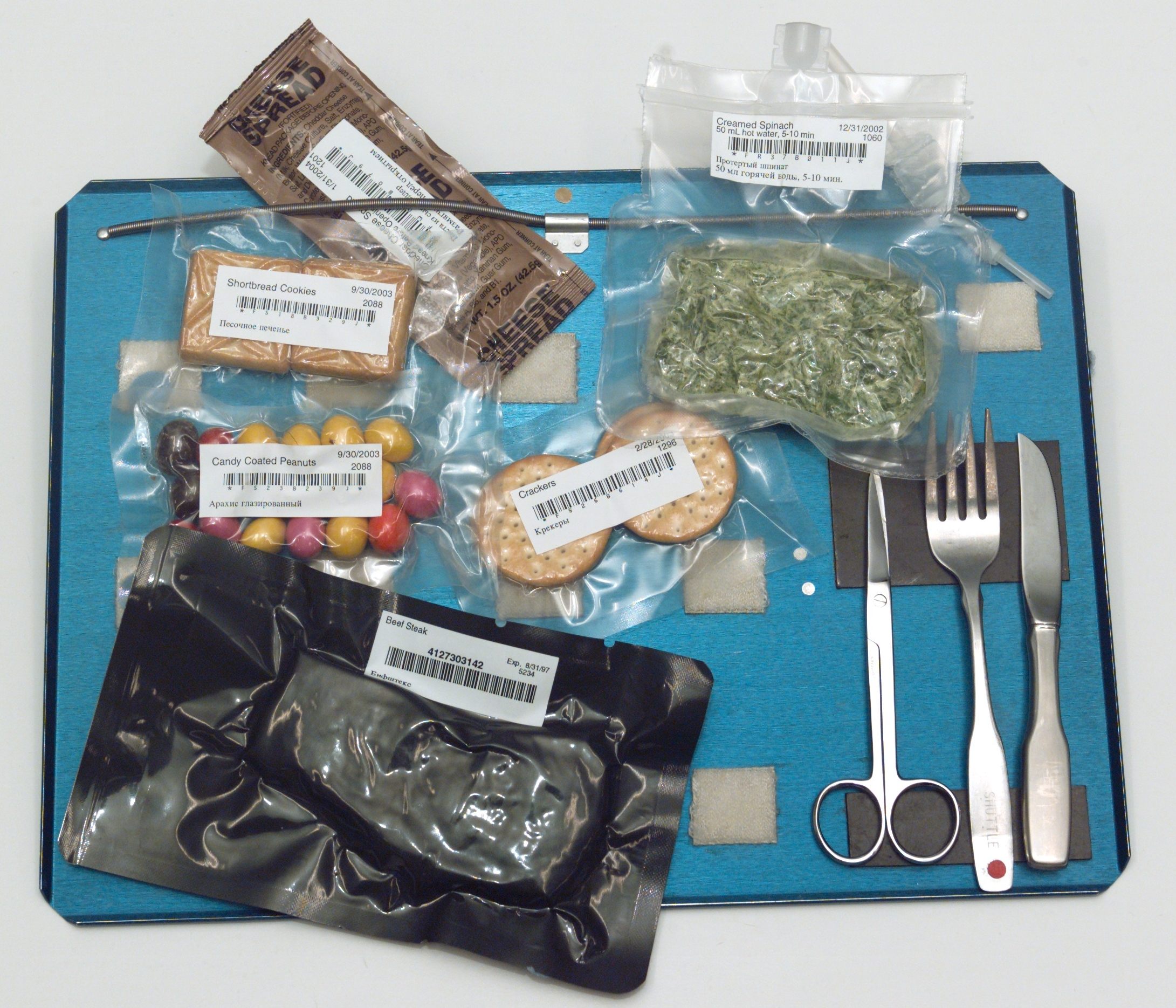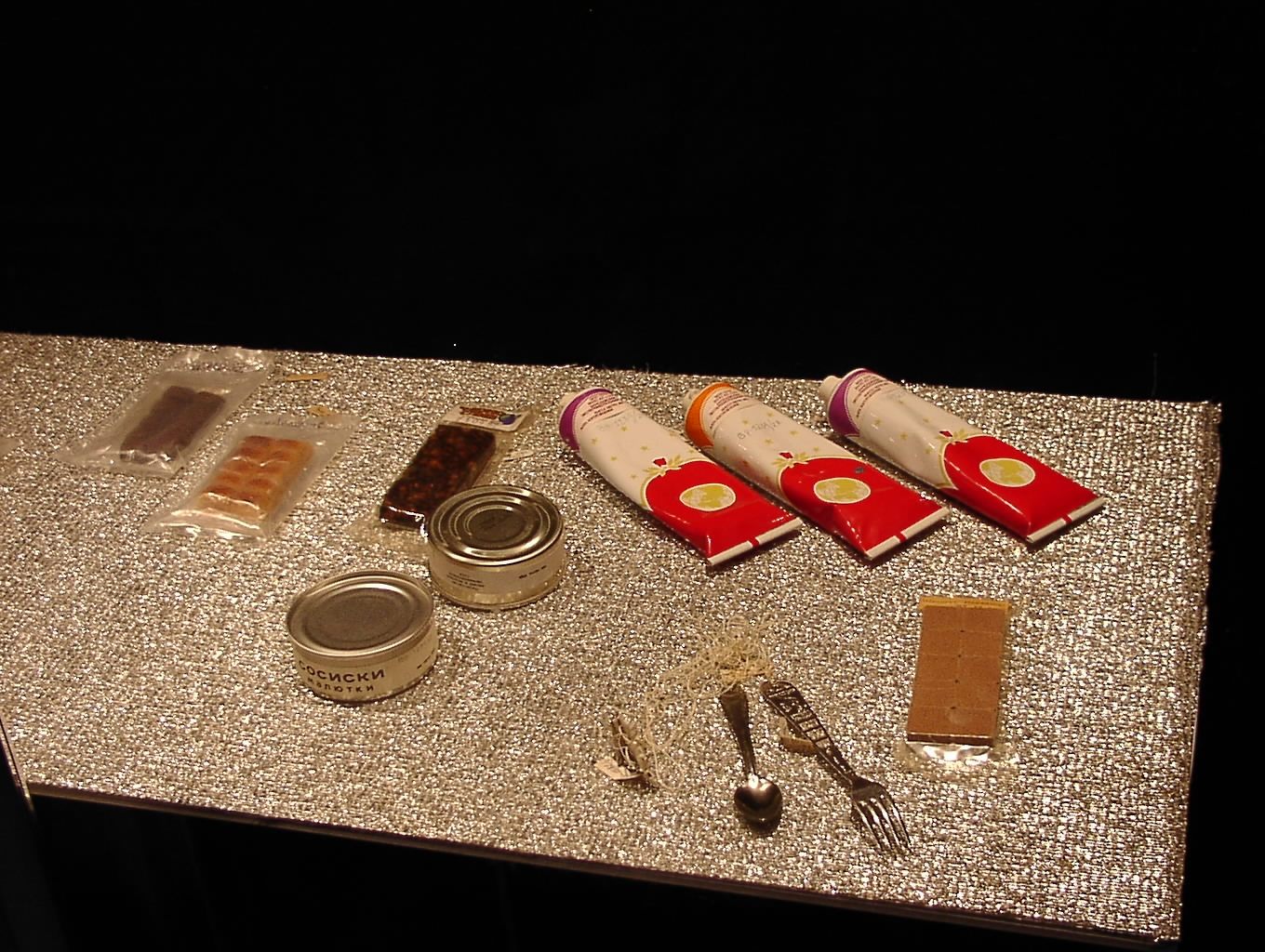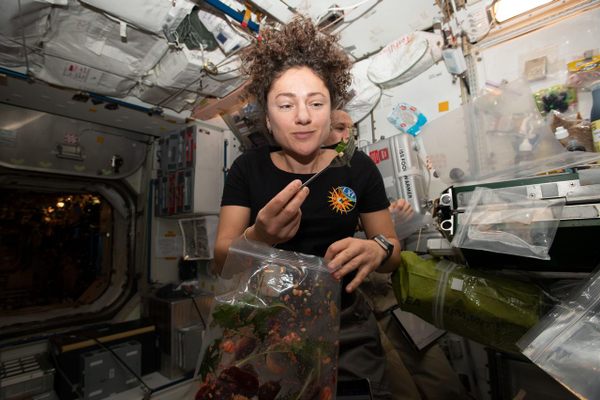Eating Like an Astronaut Means Kimchi for Koreans and Lasagna for Italians
What people eat in space depends a lot on where they’re from on earth.

The 1969 Apollo 11 mission was powered by more than fuel cells: Up in space, astronauts kept themselves going with Kellogg’s supplied-Frosted Flakes and fruit-flavored Corn Flakes cereal cubes.
The breakfast brand is not the only legacy American company whose products made it into orbit. On other occasions, NASA has sent astronauts into space with Kraft pudding (butterscotch, “Banana Split,” and vanilla); Del Monte peaches, pears and pineapple; and Tabasco sauce, which they added liberally to almost everything. (Things taste less strong in space.) Americans’ international colleagues enjoy their own tastes of home. Each national space organization runs its own kitchen—and feeds its astronauts space versions of their national cuisine.
The International Space Station is perhaps the world’s most ambitious project of international cooperation. Astronauts from all over the world live side by side, often working on similar or shared projects. But what’s in their larders is far more diverse. Russians, for instance, pride themselves on great fish options—unsurprising for a country whose most prized dishes include a selection of smoked fish, caviar, and “herring under a fur coat.” For cosmonauts, the day begins with cottage cheese and porridge, and might end with a lightly spiced perch. On other days, they’ll squeeze dinner out of a blue toothpaste-like tube labeled борщ, or Borsch, in bold, beetroot-pink letters down the side.

At home, these astronauts would add fresh minced garlic as a condiment. After repeated pleading, mission control gave Russian astronauts on the International Space Station more than they knew what to do with. “They sent us so much that even if you eat one for breakfast, lunch, and dinner, we still had plenty left to oil ourselves all over our bodies for a nice sleep,” cosmonaut Maksim Suraev joked on his blog.
While most astronauts resort to instant coffee, Italians drink coffee made with beans from Lavazza and their very own in-space espresso machine. Italian space food is produced by the Turin-based Agrotec; the company sends up packages of quinoa salad with mackerel and vegetables, brown rice with chicken and vegetables, and even traditional lasagna. Many thousands of miles from Rome, there’s a clear focus on gastronomy: Shrimp is served with barley and flavored with zucchini pesto and lime, while the Italian grain farro forms the backbone of a salmon and asparagus dish. Dessert is tiramisu. It all started, co-founder David Avino told the Italian news agency Dire, with Italian astronaut Luca Parmitano. “We wanted to make his stay aboard the ISS a bit more like being on Earth,” he said. “So we tried to approximate the kind of food your mother might make you for Sunday lunch.”

This is the crux of why space food is so unstandardized, even within the confines of the International Space Station. Astronauts get homesick, and familiar fare helps alleviate those pangs of loneliness.
In 2008, when South Korea’s first astronaut made his way into space on a Russian mission, he had kimchi to keep him going. Korean scientists spent millions of dollars, and many years, engineering “space kimchi” and a variety of other Korean dishes for astronaut Ko San to eat aboard the shuttle. “If a Korean goes to space, kimchi must go there, too,” Kim Sung Soo, a Korea Food Research Institute scientist, told the New York Times.
This was no ordinary kimchi: The strong smell had been reduced between a third and half, the scientists said, and the bacteria that gives the dish its unique acidic tang was killed with radiation, due to safety concerns. “Imagine if a bag of kimchi starts fermenting and bubbling out of control and bursts all over the sensitive equipment of the spaceship,” fellow scientist Lee Ju Woon told the paper. (He practised the radiation technique on samples provided by his mother.)

Each country’s food scientists do something similar. In 2005, Momofuku Ando, the Japanese creator of instant ramen, developed a version called “Space Ram” for astronaut Soichi Noguchi to eat aboard the Discovery space shuttle. Even at zero gravity, it’s allegedly quite delicious—or as delicious as instant ramen can be—with a thick broth that clings to the bowl and thinner noodles that don’t require boiled water for cooking. On their first mission, Chinese astronauts feasted on sweet rice dumplings, lotus seeds, and fried rice to celebrate the Dragon Boat Festival taking place on earth. French chefs haven’t yet worked out how to make a croissant space-appropriate—crumbly food is dangerous to have aboard—but they have made galactic versions of lobster, scallops, and even stuffed quail for very special occasions.
During missions, these comforts from home play an important role in international cooperation. Astronauts from different countries will trade lunchboxes: Americans are said to enjoy Russian breakfast porridge, while Russian cosmonauts have spoken about their fondness for American space pastries and Japanese seafood options. On that first Russian-Korean mission, to celebrate the 47th anniversary of the day that Soviet cosmonaut Yuri Gagarin became the first person in space, Ko served his Russian colleagues a Korean meal, which concluded with Korean ginseng and green tea.
Yet despite this bounty of international fare, certain patriotic urges still apply. “Our food is better than the Americans’,” Russian astronaut Sergei Ryazansky told the Moscow-based magazine Novosti Kosmonatik in 2015. “Despite the variety, everything is already spiced. But in ours, if you wish you can make it spicy; if you want, you can make it sour.”
These world-class scientists are working on potentially world-changing projects, but despite it all, astronauts aren’t so different from us: They still trade packed lunches at the cafeteria and brag about what they brought from home.
Gastro Obscura covers the world’s most wondrous food and drink.
Sign up for our regular newsletter.


























Follow us on Twitter to get the latest on the world's hidden wonders.
Like us on Facebook to get the latest on the world's hidden wonders.
Follow us on Twitter Like us on Facebook